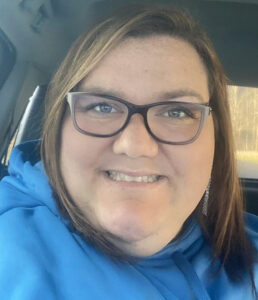
Caylyn Lemaster
As social studies teachers, we know that everyone in every community in the United States plays a part in the American story. However, when I was growing up, we did not feel that was the case.
I grew up in a very small town in Eastern Kentucky. We grew up thinking, “not much happens here, not much has ever happened here, and not much will ever happen here.” I mean, we finally got a Walmart. We felt less than the rest of the state and country.
It wasn’t until I was an adult that I began to learn how important my community’s role was and still is in the American story. Discovering this made me feel more important and more involved in American history. I decided that I never wanted my students to feel about their community like I did when I was growing up.
So, I began incorporating community inquiry projects into my elementary classroom. Students were encouraged to ask investigable questions about their community’s history. This was only the beginning. The next step would involve the students choosing their favorite questions and to begin to investigate to find the answers.
This inquiry project can happen at any grade level. For example, my 4th-graders worked on a project about the ancient burial mounds in Ashland. These mounds were literally almost right in our school’s backyard! Even though my students played near these mounds every day at recess, many of them had no idea the history that could be found within.
Using the Question Formulation Technique from Right Question Institute, my students began their journey of discovery. They asked questions about the mounds, such as:
- What are the mounds for?
- Who made the mounds in Ashland and in what year?
- What can the mounds help us learn?
After researching answers to their questions, the students were ready to communicate their conclusions. In this case, my students communicated their conclusions by making an educational drone video raising awareness of our community’s ancient history. This project was student-centered. The students asked their own questions, answered their own questions, flew the drone to obtain video footage, gave credit to their sources and even chose the music for the video.
Another inquiry project that my 5th-grade students participated in took place after learning about the lack of representation for the colonists of England. My students learned that unlike those colonists, we have a voice in our community.
The students discussed problems that they saw in our area. Racism was a problem that even my 5th-graders noticed. They began an action plan. Students considered questions, such as:
- What is the problem?
- What is the proposed solution?
- Who will do this?
- How will this affect the community of Ashland?
When answering the question, “Who is this for?” some students wrote, “The melting pot commission is for the whole community because everybody needs to be able to love themselves and not feel bad about themselves and/or their race and if you teach students to love and appreciate their race, they will stick with that when they’re older!”
They took action in this project by writing a law proposal to send to the mayor of our city. Ashland Mayor Matt Perkins was so moved by the efforts of my students that he came to our school and presented each student with a Good Citizen award.
As rewarding as these projects are, your students may also face some hard history. For example, in the Mounds project, my 4th-graders learned that there were originally 16 mounds as compared to the six that remain. My students had to learn that the other mounds were leveled due to city improvements. This brings up a topic of discussion about what are considered improvements.
My 5th-graders faced personal feelings about their own heritage and race experiences when working on the law proposal about race appreciation. It is important to think about what hard history your students might face before you begin your project so you can be prepared to address the topics and/or facilitate appropriate discussion.
There are so many possibilities when creating an inquiry-based community project for your students. Some steps to get you started are:
- Check out the local history of your community.
- Think about what method of inquiry you would like to use to kickstart the project.
- Decide how your students will investigate their questions.
- Decide how you want your students to communicate their conclusions.
One of the best things about this project is it is completely student-centered. The students ask their own questions and investigate them. They take what they learn and communicate their own conclusions. Equally important, our students will never have to feel insignificant in America’s story.
Caylyn Lemaster is a teacher at Crabbe Elementary (Ashland Independent). She is currently a member of the advisory panel in revising the Kentucky Academic Standards for Social Studies and has served on the Teacher Advisory Panel for the National Constitution Center. For more information about community-based inquiry projects, please feel free to email the author.




Leave A Comment